Dr. Karen Mann Catalyst Grant — Recipients
2023
Lucas Streith, MD
Dissecting surgical cognition: Exploring anatomy knowledge in surgeons' decision-making
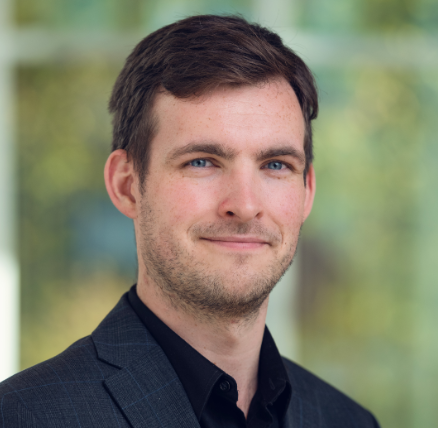
Lucas Streith, MD
PGY3 General Surgery Resident, Department of Surgery, Faculty of Medicine, University of British Columbia
Clinical Educator Fellow, Centre for Health Education Scholarship, Faculty of Medicine, University of British Columbia
Anatomy is critical to surgical work, as surgery involves manipulating anatomy to remove disease and return patients to a functional state. Current research has largely focused on the role of anatomy in decision-making, but surgical practice extends beyond clinical reasoning, involving communication, teaching, and resource allocation, among others. This study explores how surgeons use anatomy in their practice, specifically in an acute care context. By identifying how expert surgeons gather, process, and use anatomic information in their work, this study aims to highlight the cognitive processes and practices surgeons engage in anatomically. The way surgeons perform these tasks is challenging to explicitly identify as experts often do them subconsciously, making them even more challenging to teach to surgical trainees. Identifying these tacit acts of expert surgical cognition will help clarify the role of anatomy in surgical expertise, providing an end target for surgical training and a roadmap for getting there.
2022
Timothy Nguyen, MD, FRCPC
Informal teaching in postgraduate medical education: exploring how clinical supervisors evaluate and refine their teaching strategies.
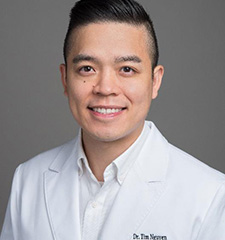
Timothy Nguyen, MD, FRCPC Radiation Oncologist, Department of Radiation Oncology, London Health Sciences Centre
Assistant Professor, Department of Oncology, Western University
A significant proportion of resident education during clinical rotations is provided by physicians through informal teaching that is interwoven with clinical service. These teaching encounters are often reactive, unplanned, varied, and typically occur without formal feedback to the teacher.
Clinical teachers need processes to evaluate the effectiveness of their informal teaching practices and use that information to adjust or reinforce their current strategies. This work intends to better understand both strategies and deficiencies related to assessing and improving informal clinical teaching. The results of this study may help clinical teachers reevaluate and improve their own practices with an intent to improve resident education. As well, by better understanding how clinical teachers assess and transform their teaching skills, department and education leaders may be better equipped to ensure faculty are well-supported.
2020
Kayla Nelson, MD, FRCSC
Residents as Supervisors: A Cognitive Lens on How Senior Residents Make Entrustment Decisions
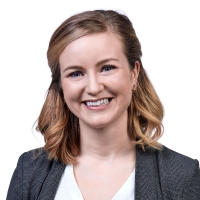
In many programs, senior residents spend a significant amount of time supervising junior residents in the clinical context. Given there are numerous social and psychological factors that differ in the supervisor-trainee relationship between senior residents and faculty supervisors, it is possible that the entrustment-decision making process varies widely between these two groups. For example, senior residents’ may be influenced by their own performance uncertainties or by the fact that they must justify their entrustment decisions to the staff who is providing ultimate oversight.
Although it is likely that social, contextual and psychological nuances such as this are relevant to the entrustment decision-making process, the nature and extent of their impact remains very unclear. More exploration in this area is critical if programs intend to continue incorporating documentation of senior resident entrustment decisions to help competency committees’ determine high-stakes decisions for junior residents.
2019
Omar Salim, MD, MSc
The refinement of the diabetic wound assessment learning tool (DiWALT)
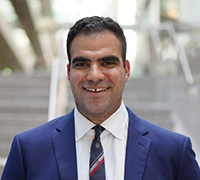
Omar Salim, MD, MSc
Resident Physician PGY4, Division of Vascular Surgery,
Faculty of Medicine, University of Toronto
Research Fellow, Temerty-Chang Telesimulation Centre,
University Health Network
Abstract
There has been a rise in the prevalence of diabetes in Canada. Of its complications, diabetic foot wounds levy the highest toll, as the largest cause of extremity amputation in Canada. There is a dearth of literature on the optimal way to teach and assess the management of these patients. The effective implementation of Competence by Design [CBD] relies on assessment tools with a strong base of validity evidence, with the Diabetic Wound Assessment Learning Tool [DiWALT] being the only tool studied for use in this domain. In previous studies, the DiWALT has been shown to exhibit excellent validity for simulation based assessments, with a Generalizability coefficient of 0.871 and a Phi coefficient of 0.866. When viewed through the lens of the Knowledge-to-Action [KTA] framework, the DiWALT represents a product of the knowledge creation process and it is necessary to adapt this knowledge to its intended context. In this case, it is necessary to refine the DiWALT for its intended use within the CBD paradigm. Feedback from the DiWALT development process suggested that a key barrier to the acceptability of the DiWALT was its length. A Cronbach’s alpha calculated at 0.95 supports this and suggests that there is indeed redundancy in the assessment items on the DiWALT. To rectify this issue and refine the DiWALT, we will conduct further simulated assessments with the tool. Each assessment will be conducted by 4 raters. The results of these assessments will be analyzed using exploratory factor analysis and test items will excluded should they prove to be poorly correlated to the underlying construct of interest. Generalizability studies and Cronbach’s alpha will be recalculated for assessments using the truncated DiWALT to confirm the psychometric properties of the tool after refinement. The refined tool will form the basis of further study into the DiWALT.
This work is important to medical education because…
This work is important to medical education for two primary reasons. The first is how it clearly shows the effectiveness of applying a KTA framework to medical education research. Developing and refining the Diabetic Wound Assessment Learning Tool (DiWALT) within this framework has allowed us to develop an educational product that is of interest to educators and methodologically rigorous in a relatively short span of time. Secondly, diabetic foot wounds comprise a third of diabetes-related healthcare expenditures, and are the primary cause of amputation in Canada. Few studies focus on how to teach and assess wound management. Given the importance of ‘assessment for learning’ in Competence by Design, the development and refinement of the DiWALT addresses the need for improved education on this disease process. This can only improve the outcomes for patients suffering from diabetic wounds.
2018
Tomas J. Saun, BSc(hon), MD, MASc(c)
Improved video recording of open surgery with a body-mounted motorized gimbal-stabilized camera system
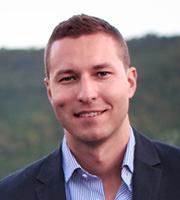
Tomas J. Saun, BSc(hon), MD, MASc(c)
Resident Physician, University of Toronto
Abstract
Intraoperative video recording has become a fundamental technology in modern-day surgery. It serves a myriad of uses, including better surgical training, continuing performance enhancement and quality improvement initiatives. This was our team’s impetus for developing and refining the Operating Room Black Box – an internationally used platform that analyzes intraoperative video recordings, identifies errors and provides feedback to surgeons. While this platform has already been shown to reduce technical errors in laparoscopic surgery, translation for use in open surgery, which comprises the majority of surgical procedures performed today, has proved challenging. This is mainly due to our inability to capture high quality intraoperative video of open surgery, which unlike laparoscopic surgery does not already have high-resolution cameras integrated into the surgical equipment.
The goal of this project is to develop a prototype camera system optimized for filming open surgery and to benchmark it against existing technologies. The prototype borrows from the rapidly evolving unmanned aerial vehicle (UAV) industry where significant advances in camera stabilization technology have been made. Objective testing of the camera system involves recording simulated surgical procedures with the prototype device, as well as the two most commonly used camera configurations: the head-mounted action camera and the light handle-mounted camera. The data metrics used for comparison were generated from the limitations of previously described systems and include motion, obstruction, sharpness and brightness. The prototype system will also be trialled by surgeons in the real operating room. A subjective rating of their experience using the device, as well as the quality of the video captured, will be collected.
Technological innovation is absolutely critical to fulfil the unmet need for better video capture of open surgery. Following development and testing, this technology will serve as an indispensable tool for surgical education from the beginning of training well into ongoing professional practice.
This work is important to medical education because…
Intraoperative video recording has become a fundamental technology in modern-day surgery, and serves a myriad of uses, including better surgical training, continuing performance enhancement, and quality improvement initiatives. Unfortunately, in open surgery, we do not have the appropriate technology to reliably and routinely capture high-quality intraoperative video. This work, therefore, aims to develop a better camera system that is optimized for filming open surgery and then benchmark it against existing technology. Following development and testing, this technology will serve as an indispensable tool for surgical education from the beginning of training well into ongoing professional practice.